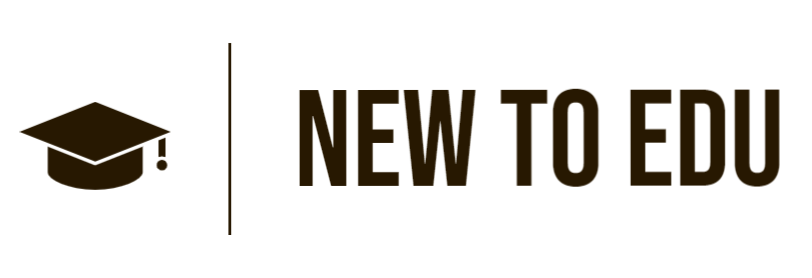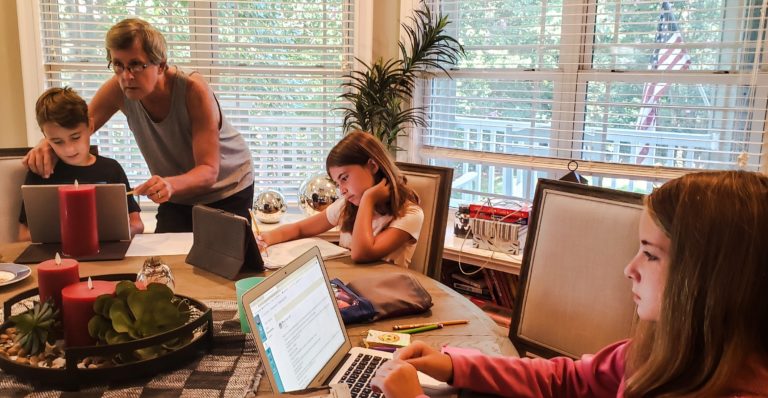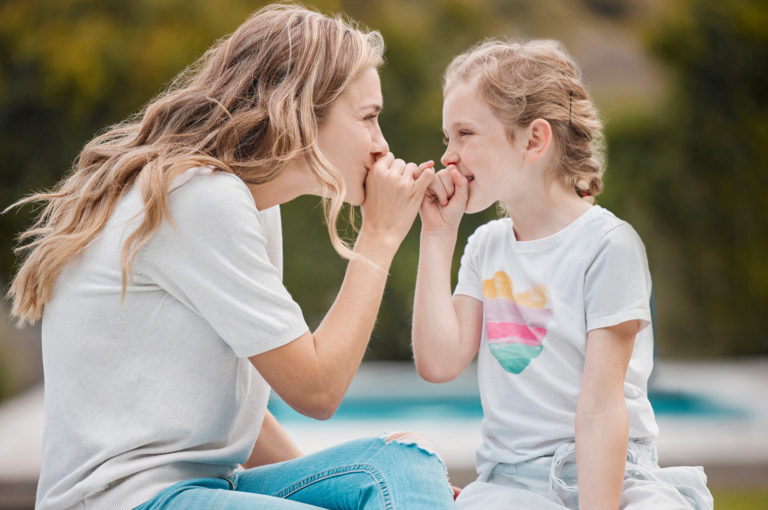Homeschool Kindergarten: What to Teach and How to Start
Imagine this: a parent and their little one cozied up at a desk, surrounded by a rainbow of crayons, pencils, books, and flashcards. 🖍️📚
They’re diving into some basic math fun, with the kiddo soaking up every bit of learning like a sponge.
In the backdrop, there’s a vibrant world map, hinting at all the amazing geography adventures to come.
This scene?
It’s all about warmth, nurturing, and the joys of learning together – a perfect snapshot of homeschooling kindergarten.
Starting homeschooling in kindergarten is like embarking on an awesome adventure with your child. 🚀
It’s all about crafting a learning journey that’s as unique as they are.
But, hold on, where do you even begin? What are the must-teach topics? And how do you ensure your little one’s getting all the right nuggets of knowledge? 🤔
No worries, I’ve got your back! In this article, I’m spilling the beans on all things kindergarten homeschooling. 🍵
We’ll chat about picking the perfect curriculum, understanding what your child should learn, and all the steps in between. 🛤️
So, let’s get those educational engines revving and set off on a journey that’ll shape your kiddo’s bright future! 🌟📖
Key Takeaways:
- Homeschooling kindergarten allows for a personalized and flexible learning experience.
- Choosing the right curriculum is essential for a well-rounded education.
- Knowing the kindergarten learning objectives will help you plan your lessons effectively.
- Reading aloud and engaging in educational activities are crucial for your child’s development.
- Remember to adapt your approach based on your child’s unique needs and interests.
How to Homeschool Kindergarten
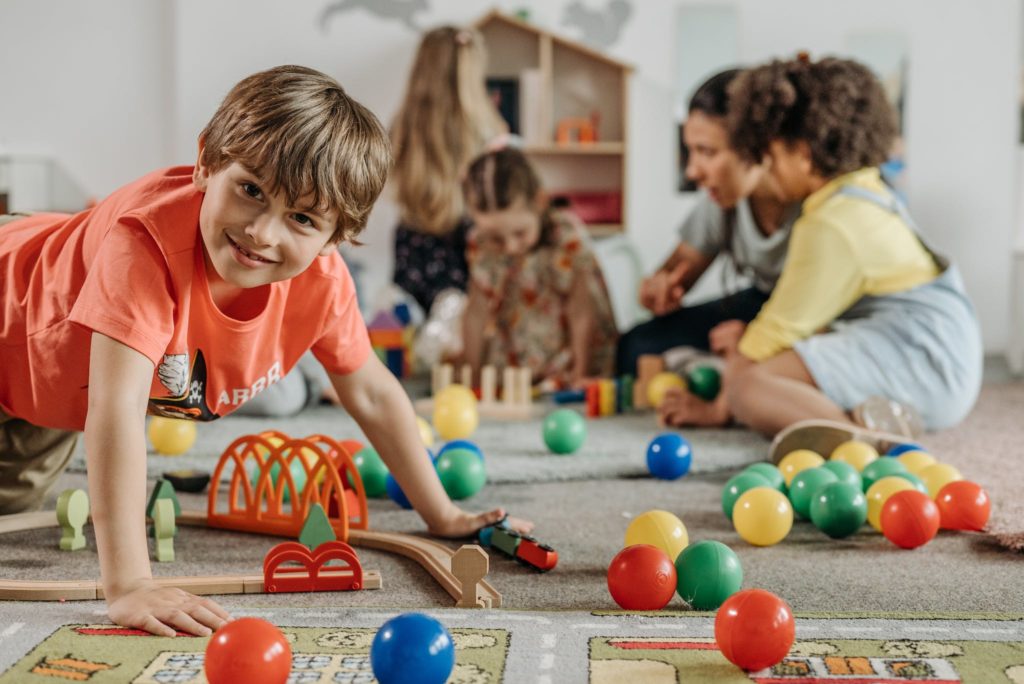
When it comes to homeschooling kindergarten, there are a few key steps to help you get started on the right track.
By following these guidelines, you can create a positive and effective learning experience for your child.
1. Set a Schedule
First and foremost, establish a schedule that works best for you and your child. Decide on the number of hours per day or week that you will dedicate to homeschooling.
It’s important to have a consistent routine to provide structure and create a sense of normalcy.
2. Choose the Subjects
Next, determine which subjects you will teach in kindergarten. The core subjects typically include math, language arts, science, and social studies.
You can also incorporate other subjects such as art, music, and physical education to provide a well-rounded education for your child.
Tailor the subjects to align with your child’s interests and learning style.
3. Familiarize Yourself with Learning Objectives
It’s essential to be familiar with the learning objectives for kindergarten. This will help you understand what your child should be learning and achieving at this stage.
Learning objectives can vary depending on your state or educational standards, so be sure to reference the appropriate guidelines.
4. Plan Reading Activities
Reading is a fundamental skill that should be emphasized in kindergarten. Plan engaging and interactive reading activities to promote literacy and language development.
Incorporate storybooks, phonics exercises, and sight word recognition exercises into your curriculum to help your child become a confident reader.
5. Implement Homeschooling Tips
Lastly, implement homeschooling tips to ensure a successful year. These tips might include creating hands-on activities, incorporating educational games, utilizing online resources, and joining homeschooling communities for support and guidance.
By following these steps and incorporating your own creativity and teaching style, you can make homeschooling kindergarten a fulfilling and enriching experience for you and your child.
What Subjects Are Taught in Kindergarten?
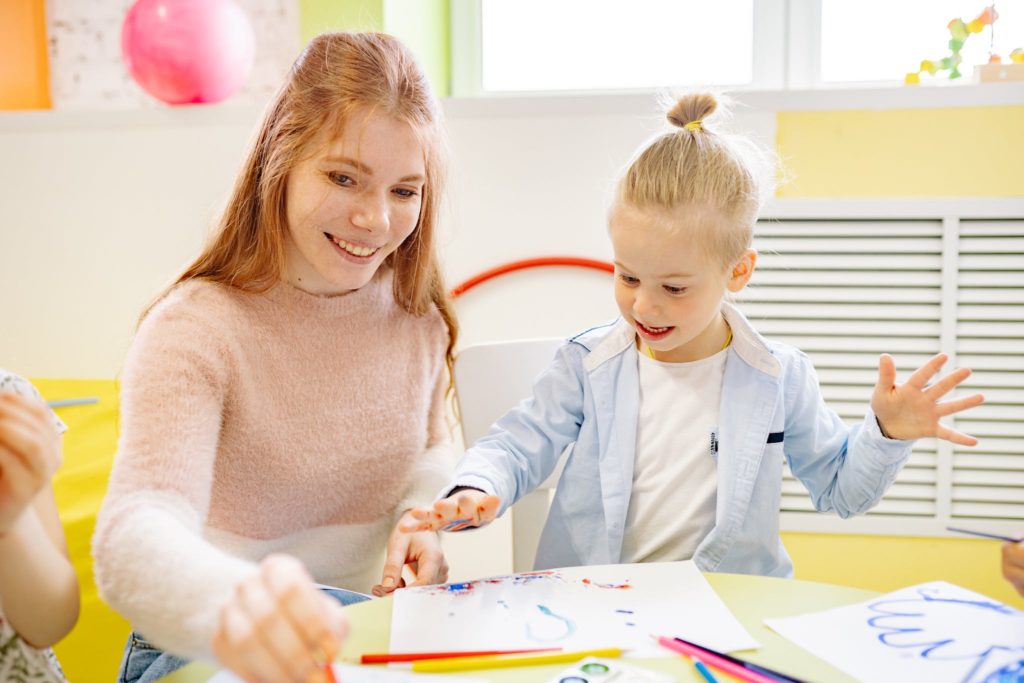
In kindergarten, a variety of subjects are taught to provide a well-rounded education for your child. These subjects include:
1. Math:
In math, kindergarteners learn basic concepts such as counting, number recognition, shapes, patterns, and simple addition and subtraction. These foundational skills set the stage for further mathematical development.
2. Language Arts:
Language arts instruction focuses on developing reading, writing, and communication skills. Kindergarteners learn letter recognition, phonics, sight words, basic reading comprehension, and forming simple sentences.
3. Science:
Science exploration in kindergarten typically involves hands-on experiments and observations.
Children learn about the natural world, plants, animals, weather, and the environment. They develop critical thinking and problem-solving skills as they explore and make discoveries.
4. Art:
Art activities allow kindergarteners to express their creativity and develop fine motor skills.
They engage in various art forms such as drawing, painting, sculpting, and crafts. Art also encourages self-expression and imagination.
5. Physical Education:
Physical education promotes physical fitness, coordination, and gross motor skills development.
Kindergarteners engage in activities such as running, jumping, throwing, and balancing. They also learn about the importance of exercise and healthy habits.
In addition to these subjects, social studies and music can be included in the curriculum.
Incorporating a variety of subjects ensures a well-rounded education and allows children to explore different interests and talents.
Kindergarten Learning Objectives
In kindergarten, children develop foundational skills that set the stage for future learning. The learning objectives for this grade level encompass a range of subjects and abilities.
Here are some key kindergarten learning objectives:
- Language and Literacy: Recognize and identify uppercase and lowercase letters, understand letter-sound relationships, develop phonemic awareness, and demonstrate basic reading comprehension.
- Mathematics: Count and recognize numbers up to 20, understand one-to-one correspondence, develop basic addition and subtraction skills within 10, and identify basic shapes and patterns.
- Science: Explore and observe the natural world, develop an understanding of living and non-living things, and conduct simple experiments and investigations.
- Social and Emotional Development: Practice self-control, develop problem-solving skills, demonstrate empathy and respect for others, and engage in cooperative play.
Homeschooling assessments play a vital role in tracking your child’s progress and ensuring they are meeting these learning objectives.
Regular assessments can help you identify areas where your child may need additional support or enrichment.
Assessments can take various forms, such as observations, one-on-one discussions, quizzes, and worksheets.
By evaluating your child’s progress, you can tailor your homeschooling approach to best suit their needs.
Remember, the kindergarten learning objectives are meant to provide a framework for your child’s education.
Every child learns at their own pace, so it’s essential to create a supportive and nurturing learning environment that encourages their natural curiosity and love for learning.
Reading Book List for Kindergarten
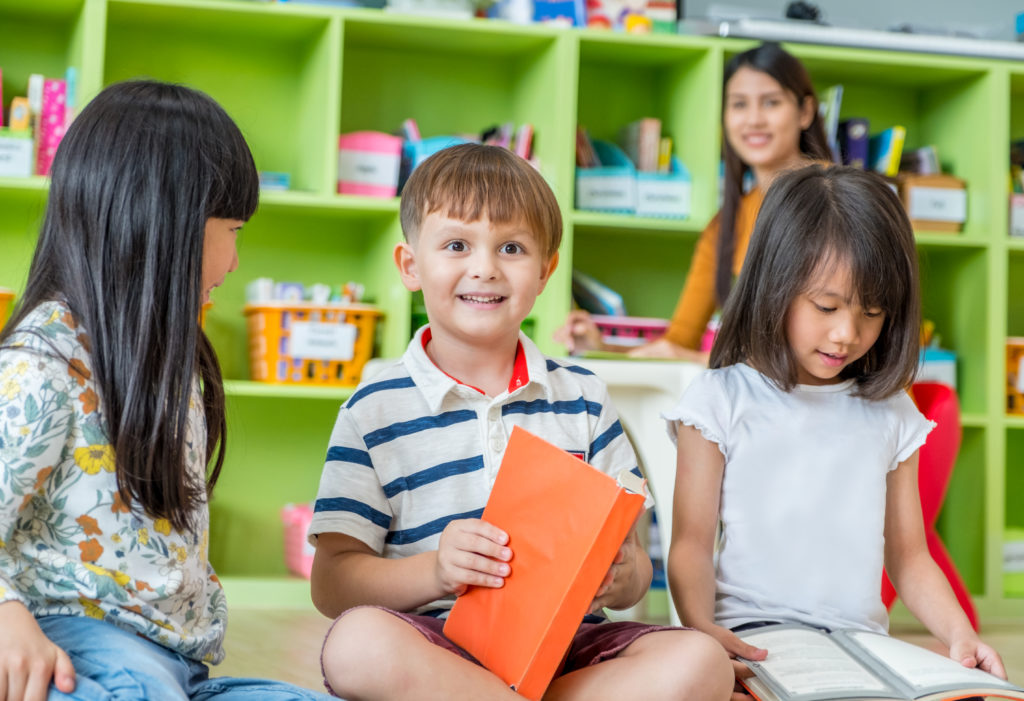
A stack of colorful children’s books arranged neatly next to a playful wooden block spelling out “Kindergarten Reading List.”
Bright, whimsical illustrations of animals and friendly characters peek out from the covers of the books, inviting young readers to explore their pages.
The titles of the books are displayed in large, bold letters, making it easy for parents and teachers to select the perfect stories for their curious kindergarteners.
In the background, a shelf filled with more books provides a glimpse into the endless possibilities awaiting young readers as they embark on their reading journey.
Reading to your child is an essential part of their kindergarten education. It helps develop their vocabulary, reading skills, and comprehension abilities.
Here are some highly recommended books for kindergarten:
- Goodnight Moon by Margaret Wise Brown
- Corduroy by Don Freeman
- Harry the Dirty Dog by Gene Zion
- Harold and the Purple Crayon by Crockett Johnson
- Click, Clack, Moo by Doreen Cronin
These books are not only entertaining but also educational, offering valuable lessons and sparking imagination.
They are suitable for kindergarten-aged children and provide engaging stories that will hold their attention.
By incorporating these books into your child’s reading routine, you can create a love for reading and foster a lifelong passion for learning.
Remember to make reading enjoyable and interactive by asking questions, discussing the stories, and encouraging your child to make predictions.
Reading these books with your child will not only enhance their literacy skills but also create precious bonding moments and cherished memories. Happy reading!
Kindergarten Homeschooling Tips & Ideas
As a homeschooling parent, I understand the importance of creating a fun and engaging learning environment for your kindergartener.
Here are some homeschooling tips and ideas that have worked well for me:
1. Schedule playtime:
It’s essential to provide your child with opportunities for unstructured play. Playtime fosters creativity, problem-solving skills, and social development.
Set aside dedicated time each day for your child to engage in imaginative play, build with blocks, or explore their interests independently.
2. Read together:
Reading is a fundamental skill that lays the foundation for academic success.
Take time each day to read aloud to your child, allowing them to develop their vocabulary and comprehension skills.
Choose a variety of books that align with their interests and introduce new topics.
3. Go on field trips:
Field trips provide hands-on learning experiences and help bring lessons to life.
Take advantage of local museums, parks, and community events to enhance your child’s understanding of different subjects.
Whether it’s a trip to the zoo, a nature walk, or a visit to a historical site, field trips offer valuable learning opportunities outside the home.
4. Encourage curiosity:
Foster a love for learning by encouraging curiosity in your child. Allow them to explore their interests and pursue topics that capture their imagination.
Answer their questions, engage in discussions, and provide resources to further their understanding.
Remember, homeschooling kindergarten should be a flexible and adaptable experience.
Don’t be afraid to modify your plans based on your child’s interests and learning style.
By incorporating these tips and ideas into your homeschooling routine, you can create an enriching and enjoyable educational journey for your kindergartener.
How Time4Learning Can Help You Homeschool Your Kindergartener

A colorful and playful homeschooling curriculum filled with various educational activities, such as reading, math, science experiments, and art projects, arranged neatly on a desk.
When it comes to homeschooling your kindergartener, having access to the right resources and curriculum is essential.
That’s where Time4Learning can help. With its comprehensive homeschooling curriculum and resources, Time4Learning provides a convenient and effective solution for homeschooling families.
Time4Learning offers a detailed scope and sequence for kindergarten, ensuring that you cover all the necessary learning objectives for this grade level.
Their interactive lessons engage young learners and make the learning process fun and exciting.
Plus, with 24/7 access, you have the flexibility to create a schedule that works best for you and your child.
Homeschooling Curriculum and Resources
- Kindergarten lesson plans
- Interactive lessons
- Comprehensive curriculum
- 24/7 access
Time4Learning’s curriculum aligns with the kindergarten learning objectives, providing you with peace of mind that your child is receiving a quality education.
Whether you’re new to homeschooling or looking for a more structured approach, Time4Learning offers the tools and support you need to homeschool your kindergartener successfully.
Choosing a Homeschooling Curriculum for Kindergarten

When it comes to homeschooling kindergarten, selecting the right curriculum is essential.
With so many options available, it can feel overwhelming to make the best choice for your child’s education.
Here are some key factors to consider when choosing a homeschooling curriculum for kindergarten:
1. Identify your child’s learning style:
- Is your child a visual learner who benefits from colorful images and diagrams?
- Is your child a hands-on learner who learns best through physical activities and manipulatives?
- Is your child an auditory learner who thrives on listening and discussing concepts?
Understanding your child’s learning style will help you choose a curriculum that aligns with their strengths and preferences.
2. Consider your teaching style:
- Are you comfortable with a structured curriculum that provides detailed lesson plans and assessments?
- Do you prefer a more flexible approach where you can tailor the curriculum to fit your child’s interests and needs?
- Are you open to incorporating online resources and technology into your homeschooling routine?
Choosing a curriculum that complements your teaching style will make the homeschooling experience more enjoyable and effective.
3. Assess the curriculum’s content:
- Does the curriculum cover all the core subjects such as math, language arts, science, and social studies?
- Does it provide a comprehensive scope and sequence that aligns with kindergarten learning objectives?
- Are there additional resources, such as manipulatives or supplementary materials, included in the curriculum?
Evaluating the content of the curriculum will ensure that your child receives a well-rounded education in kindergarten.
By considering your child’s learning style, your teaching style, and the curriculum’s content, you can make an informed decision when choosing a homeschooling curriculum for kindergarten.
Remember, there is no one-size-fits-all approach, so take the time to explore different options and find the curriculum that best suits your child’s needs.
Do I Need an Accredited Kindergarten Curriculum?
Many parents who are considering homeschooling their kindergarteners may wonder if they need an accredited curriculum. The short answer is no, accreditation is not required for homeschooling.
Accreditation is a process that institutions and schools go through to meet certain standards set by educational authorities.
Since homeschooling is an individualized form of education, parents have the freedom to choose and create their own curriculum without the need for accreditation.
When it comes to homeschooling materials, there are plenty of resources available to help you develop a comprehensive and effective curriculum for your kindergartener.
You can choose from a variety of educational publishers, online platforms, and free resources to tailor your curriculum to meet your child’s needs and interests.
The key is to ensure that you cover the necessary subjects and learning objectives for kindergarten.
Benefits of Accredited Curriculum
- An accredited curriculum can provide a sense of reassurance for some parents, as it indicates that the curriculum has met certain standards.
- Accredited curricula often come with additional support and resources for parents, such as teacher guides and assessments.
- If you are planning to transition your child back to traditional schooling in the future, using an accredited curriculum may make the process smoother.
Building Your Own Curriculum
Building your own kindergarten homeschool curriculum allows for customization and flexibility.
You can choose the subjects, teaching methods, and learning resources that align with your child’s unique learning style.
By selecting materials and activities that cater to your child’s interests, you can create a more engaging and enjoyable learning experience.
Additionally, building your own curriculum allows you to incorporate educational materials from different publishers, online platforms, and free resources.
This gives you the freedom to select the resources that best suit your child’s needs and align with your educational goals.
Overall, while accreditation is not necessary for homeschooling, it can provide some benefits.
However, it is important to remember that the decision to use an accredited curriculum or build your own ultimately depends on your preferences and your child’s individual needs.
With the wide range of homeschooling materials available, you have the flexibility to create a successful and fulfilling kindergarten homeschool curriculum.
Building Your Own Kindergarten Homeschool Curriculum

A colorful pattern of different educational materials such as books, pencils, crayons, flashcards, and worksheets arranged neatly on a plain table.
When it comes to homeschooling your kindergartener, creating your own curriculum can be a rewarding and effective approach.
By customizing the content and activities, you can tailor the learning experience to suit your child’s interests, learning preferences, and your own teaching style.
Here are some steps to help you build your own kindergarten homeschool curriculum:
1. Determine Your Child’s Learning Goals
Start by identifying the learning goals you have for your kindergartener.
Consider the subjects you want to cover, such as math, language arts, science, art, and physical education.
Think about the specific skills and knowledge you want your child to gain in each subject.
2. Research Curriculum Options
Explore different curriculum options that align with your child’s learning goals.
Look for homeschooling resources, lesson plans, and materials that cover the subjects you have chosen.
Consider both free and paid options to find the best fit for your budget and preferences.
3. Mix and Match
Take a flexible approach by mixing and matching curriculum choices for each subject.
You can combine resources from different publishers or even create your own lesson plans.
This allows you to create a curriculum that best meets your child’s needs and interests.
Incorporate a variety of materials and activities, such as textbooks, workbooks, online resources, educational games, and hands-on projects, to keep the learning experience engaging and dynamic.
Remember to regularly assess your child’s progress and make adjustments to the curriculum as needed.
Building your own kindergarten homeschool curriculum gives you the freedom to personalize your child’s education and create a learning environment that nurtures their individual growth and development.
Additional Resources:
- HomeSchool.com – A comprehensive website offering a vast collection of homeschooling resources, lesson plans, and curriculum options for kindergarten.
- Homeschool Buyers Co-op – An online marketplace where you can find discounted homeschooling curriculum and resources for kindergarten.
- Homeschool Creations – A blog that provides free printables, lesson plans, and homeschooling ideas specifically tailored for kindergarteners.
Teaching Kindergarten with Free Curriculum

A colorful stack of books and resources with a smiling child next to it, surrounded by nature and sunlight.
When it comes to homeschooling kindergarten, finding a free curriculum can be a great option that saves both time and money.
With the abundance of resources available online, you can provide your child with a quality education without breaking the bank.
Here are some educational activities and free homeschooling curricula to consider for teaching kindergarten:
1. Online Learning Platforms
There are several online learning platforms that offer free kindergarten curriculum.
These platforms provide interactive lessons, printable worksheets, and educational games to engage your child in a fun and engaging learning experience.
Some popular options include Khan Academy Kids, ABCmouse, and PBS LearningMedia.
2. Educational Websites
Many educational websites offer free resources specifically designed for kindergarten.
These websites provide lesson plans, activities, and worksheets that cover various subjects such as math, language arts, science, and social studies.
Some notable websites include Education.com, Teach Starter, and Scholastic.
3. Public Library Resources
Your local public library can be a valuable resource for free educational materials.
Libraries often have a wide selection of children’s books, educational DVDs, and interactive learning kits that can supplement your kindergarten curriculum.
Additionally, libraries may offer free storytime sessions and educational programs for young children.
4. Online Communities and Forums
Joining online communities and forums dedicated to homeschooling can provide you with a wealth of information and resources.
Homeschooling parents often share their experiences, tips, and free curriculum recommendations.
These communities can also serve as a support system where you can connect with other homeschooling families and exchange ideas.
By utilizing these educational activities and free homeschooling curricula, you can create a well-rounded kindergarten curriculum that meets the learning objectives for your child.
Remember to adapt and customize the materials to suit your child’s unique learning style and interests.
With dedication and resourcefulness, homeschooling kindergarten can be an enriching and affordable educational experience.
Conclusion
Homeschooling kindergarten is an exciting and rewarding journey. As a parent, I understand the importance of starting off on the right foot to ensure a positive learning experience for both you and your child. By following the tips and guidelines mentioned in this article, you can create a successful and enjoyable homeschool experience.
When deciding what to teach in kindergarten, it’s crucial to familiarize yourself with the kindergarten learning objectives. These objectives serve as a roadmap for your child’s education and lay the foundation for future learning.
Remember to cover subjects such as math, language arts, science, art, and physical education to provide a comprehensive education.
As you embark on this homeschooling journey, I encourage you to incorporate homeschooling tips that can make the experience even more enjoyable. Be flexible, schedule playtime, read together, and take frequent breaks to keep the learning process engaging and fun. Remember that technology can also be a valuable tool for educational purposes.
In conclusion, homeschooling kindergarten allows you to customize your child’s education and create a learning environment that suits their unique needs and interests. With the right curriculum, resources, and a positive mindset, you can provide a solid foundation for your child’s educational journey.
Embrace this opportunity and enjoy the rewarding experience of homeschooling your kindergartener!
FAQ
What subjects are typically taught in kindergarten?
The subjects typically taught in kindergarten are math, language arts (reading and writing), science, art, and physical education. Additional subjects such as social studies and music can also be included.
What are the learning objectives for kindergarten?
Kindergarten learning objectives include understanding the parts of a book, identifying uppercase and lowercase letters, demonstrating comprehension skills, counting and solving addition/subtraction, and fluently adding/subtracting within 5 and 10.
Can you recommend some books for kindergarten reading?
Sure! Some recommended books for kindergarten include “Goodnight Moon” by Margaret Wise Brown, “Corduroy” by Don Freeman, “Harry the Dirty Dog” by Gene Zion, “Harold and the Purple Crayon” by Crockett Johnson, and “Click, Clack, Moo” by Doreen Cronin.
What tips can you provide for homeschooling kindergarten?
Some tips and ideas for homeschooling kindergarten include scheduling playtime, reading together, going on field trips, encouraging curiosity, being flexible, taking frequent breaks, and using technology for educational purposes.
How can Time4Learning help with homeschooling kindergarten?
Time4Learning is a helpful resource for homeschooling families. It offers kindergarten lesson plans, a detailed scope and sequence, interactive lessons, 24/7 access, comprehensive curriculum, and the flexibility to progress at your child’s pace.
Do I need an accredited kindergarten curriculum for homeschooling?
No, accreditation is not necessary for homeschooling. Homeschooling parents have the freedom to choose and create their own curriculum without the need for accreditation. Accreditation is for schools and institutions, not individual homeschools.
Can I build my own kindergarten homeschool curriculum?
Absolutely! Building your own kindergarten homeschool curriculum allows for customization and flexibility. You can choose an all-in-one curriculum that covers all subjects or mix and match curriculum choices for each subject.
Are there free homeschooling curricula available for kindergarten?
Yes, there are free homeschooling curricula available online that can be a cost-effective option for teaching kindergarten. These curricula often include lesson plans, activities, and resources to support learning.
How can I make homeschooling kindergarten a successful and enjoyable experience?
By following the tips and guidelines mentioned in this article, you can create a successful and enjoyable homeschool experience for both you and your child. Remember to adapt and customize your approach based on your child’s unique needs and interests.
